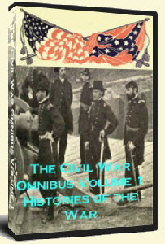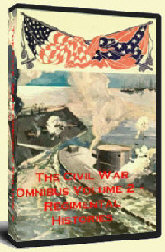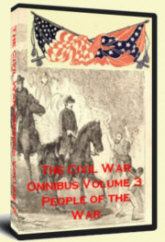A failed farmer, businessman, and bill collector. A president roundly criticized as a supporter of corruption. Ulysses S. Grant was not an astute businessman, or even an inspired president; however, as a soldier, he was a success. Grant’s leadership of the U.S. Army during the Civil War made him one of the most celebrated and respected generals that the U.S. has ever produced. His was an unqualified success, one that few would have predicted.
Born in Ohio in 1822, Hiram Ulysses Grant appealed to his U.S. Congressman, Thomas L. Hamer, for admission to West Point at the age of 17. Hamer unwittingly gave Hiram Ulysses Grant the name he would become known for – apparently confused as to the young Grant’s full name, Hamer nominated him as “Ulysses S. Grant,” the S. short for Simpson, Grant’s mother’s maiden name.
Although a soldier by profession, I have never felt any sort of fondness for war, and I have never advocated it, except as a means of peace. Ulysses S. Grant
An unexceptional student, Grant graduated from West Point in 1843, 21st in a class of 39. Although he was a reputable horseman, who would have seemed a natural for the cavalry, Grant was instead appointed regimental quartermaster in the U.S. Army. He served as quartermaster in the Mexican-American War, and was twice brevetted for bravery during the war.
After the war ended in 1848, Grant remained with the Army, stationed at various points West. He’d been made captain by 1854 when he abruptly resigned from the Army. A heavy drinker throughout his life, the rumor that he was found drunk on duty and given the choice of resignation or court martial hounded Grant for years afterward.
Civilian life did not agree with Grant; he failed at several ventures until settling in his father’s Illinois leather goods store in 1860. For Grant, the secession and Civil War that followed could not have come at a better time. When Lincoln called for volunteers after the attack on Fort Sumter, Grant wasted no time recruiting a company and accepting an offer by the Illinois governor to train volunteer regiments.
The art of war is simple enough. Find out where your enemy is. Get at him as soon as you can. Strike him as hard as you can, and keep moving on. Ulysses S. Grant
Grant spent the first year of the war in Missouri, and it wasn’t until he captured two Tennessee Confederate posts, Fort Henry and Fort Donelson, the two first major Union victories of the war, that Grant distinguished himself. Accepting “no terms except unconditional and immediate surrender,” Grant took over 12,000 Confederate prisoners, gaining a promotion to major general from President Lincoln and becoming a national hero in the process.
However, Grant’s newfound glory was not without drawbacks; his commanding general, Henry W. Halleck, took issue both with Grant’s reputed drinking problem and his visit with Halleck’s rival, Don Carlos Buell, and attempted to relieve Grant of the command of what was then known as the Army of West Tennessee. Intervention by Lincoln prevented Grant’s dismissal. Problems with Halleck proved so distressing to Grant that he considered resigning from the Army.
Halleck soon achieved a position in Washington, leaving Grant as Major General of what was now known as the Army of the Tennessee. Grant’s 1863 Vicksburg Campaign would leave no doubt that Halleck’s replacement was more accomplished than Halleck himself; celebrated in the annals of military history, Grant’s strategy to take this important Confederate city was also a daring and unheard of maneuver. Grant took his troops to enemy territory, operating without the customary supply lines, and in short order destroyed the railroad connecting Vicksburg to the rest of the country. Surrounding Confederate General Pemberton’s troops, who now had no supply line themselves, Grant forced Pemberton – and the southwest part of the Confederacy – into submission. This achievement, which coincided with the Union victory at Gettysburg, crippled the Confederacy.
In every battle there comes a time when both sides consider themselves beaten, then he who continues the attack wins. Ulysses S. Grant
It was on to Chattanooga, and a spectacular Union victory, orchestrated by Grant. Lincoln bestowed upon Grant the command of the entire U.S. Army, and Grant paid him back in kind with a strategy that not only won the war, but won Lincoln re-election.
As General-in-Chief, Grant moved his headquarters to Virginia, where he set in motion the plan for coordinated attack against the Confederacy. Grant, along with George Meade and Benjamin Butler, would go up against General Robert E. Lee and the formidable Army of Northern Virginia, while Franz Sigel would take the Shenandoah Valley, Sherman would take Georgia, while other sieges would be set upon railroads in West Virginia and the city of Mobile. Grant’s plan was novel; he was the first general to undertake a unified attack in so many different regions, and the first to propose total war, in which civilians and cities would be attacked as well as armies.
While Sherman, Sigel, and others wrought destruction throughout the South, Grant dug in for a battle against Lee that would last for nearly a year. Referred to as the Overland Campaign, Grant’s plan to take down Lee and the Army of Northern Virginia was enacted at Spotsylvania, Cold Harbor, and Petersburg. Although many of the battles that ensued could rightfully be called draws, any loss was devastating to Lee, whose numbers were growing steadily smaller.
By the autumn of 1864, Sherman had taken Atlanta, and Union victories on other fronts had assured the North that the war was turning in their favor. Lincoln was reelected due to this turn of the tide. He had Grant to thank not only for the Union’s growing dominance, but for his second term.
Grant finally ran Lee out of the Confederate capital of Richmond in April of 1865, and on April 9th, Lee surrendered to Grant at Appomattox Court House. The long, bloody war was over, and Grant had emerged as the hero of the Union.


